Amazing treasure finds in every US state
Treasures from across America

From gemstones found in a Hawaiian shipwreck to hidden paintings inside an abandoned Kansas theater, we've rounded up a state-by-state guide to the most exciting treasures from across America.
Read on to explore the incredible stories behind these one-of-a-kind finds – and to unearth your state's most amazing historic haul.
Alabama: gold coins
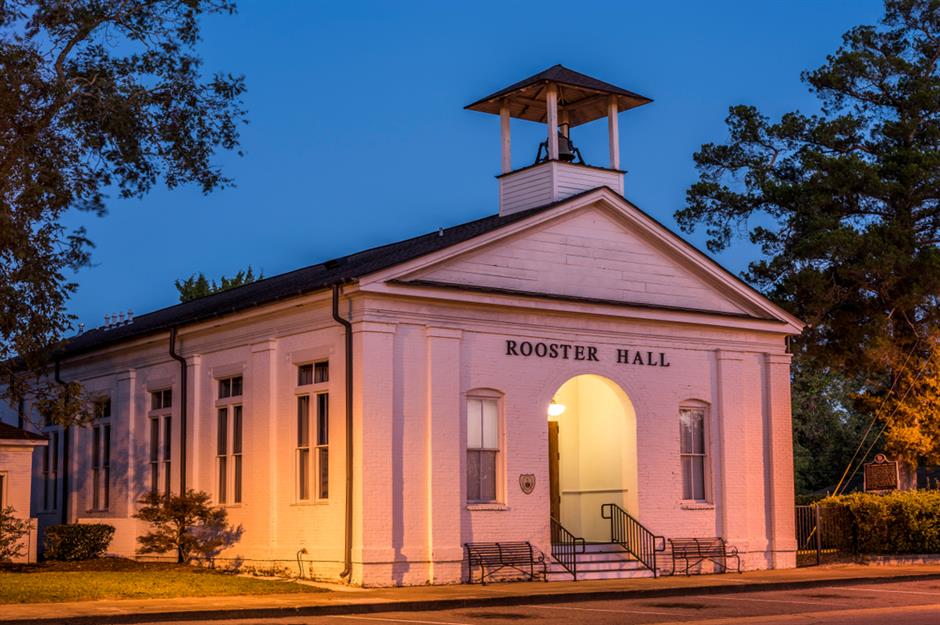
The biggest Alabama treasure discovery took place in the city of Demopolis (pictured) back in the spring of 1926.
According to a report in The New York Times, Gayus Whitfield used "papers" left behind by his father to locate a stash of gold coins that had been buried before the American Civil War.
Whitfield hired a team of 35 people to help him undertake the search. Just one week later, the stash of coins was found in an old can "that crumbled to the touch."
While Whitfield didn't reveal the total amount that was found, it was estimated to be worth $200,000 at the time, equivalent to $3.5 million in today’s money. Local papers estimated there were nine other heirs who'd expect Whitfield to share out his newfound wealth.
Alaska: sunken gold
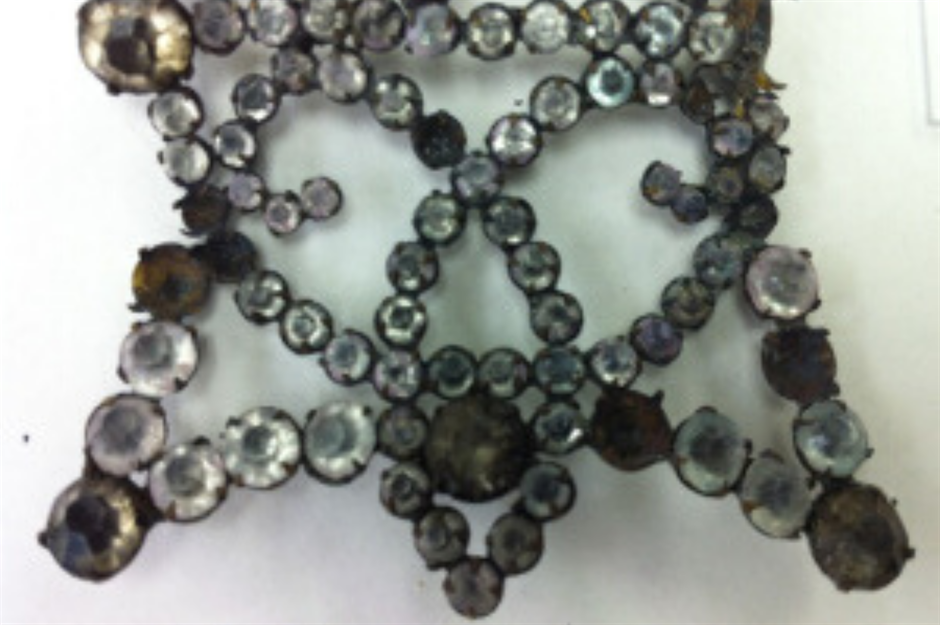
In 1901, a luxury steamship called the SS Islander sank off the coast of Alaska. The ship, and its route through the Inside Passage, had become popular with wealthy businessmen, particularly those with a stake in the Klondike goldfields.
Unsurprisingly, reports of the potentially lost gold attracted salvage efforts, but they were futile due to the shipwreck's depth and the era's poor diving technology. A team was able to locate the hull in 1934, recovering gold worth an estimated $75,000 ($2.6 million in today's dollars).
Fast-forward to 1996, and sonar technology was able to locate the bow before a legal fiasco entangled the two different companies that wanted to salvage the site.
It was only in 2012 that recovery missions were able to uncover more gold. This time, the find was worth nearly $2 million at face value, although it sold at auction in 2016 for an impressive $4 million due to its historical importance. Many speculate that there's still gold to be found in the sunken bow.
Arizona: the Tucson Crosses
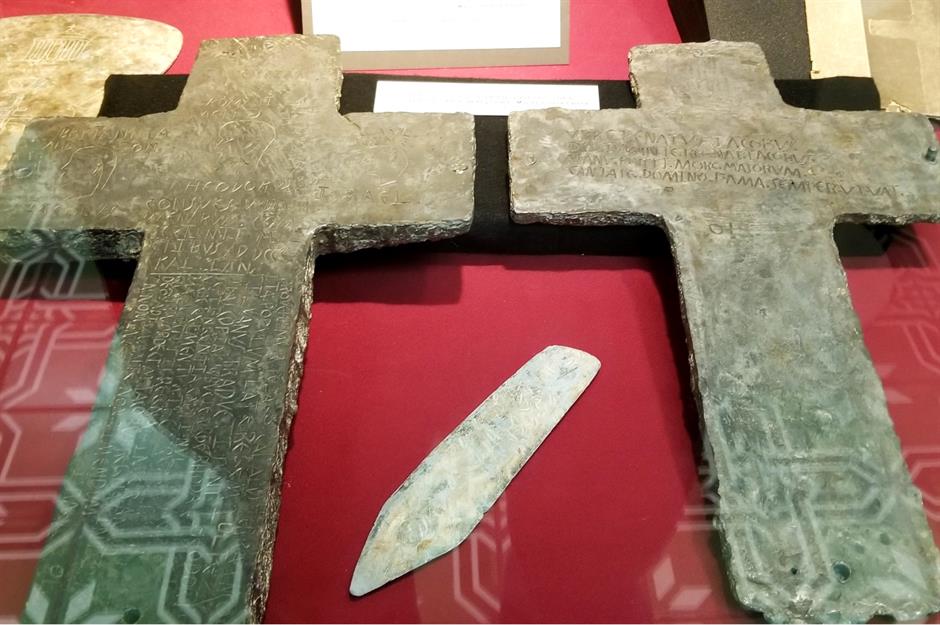
Widely regarded as one of the top states for buried treasure, Arizona is rife with tales of abandoned gold thanks to its history in mining and attracts thousands of treasure hunters each year.
One of the most notable treasure finds in the Copper State's history was the discovery of the mysterious Tucson Crosses in 1924. The ancient lead crosses (pictured) are engraved with Latin and Hebrew inscriptions, and have been a source of controversy for decades. The artifacts' religious significance has sparked conspiracy theories about the potential presence of ancient Europeans in America before Christopher Columbus arrived in 1492. Meanwhile, other people have dismissed the crosses as hoaxes, with some believing them to have been crafted in the late 19th century by a sculptor named Timotéo Odohui.
Arkansas: a literary treasure hunt
.png)
In perhaps one of the most unusual treasure hunting cases of all time, a family of four discovered buried treasure in Arkansas after following clues from a novel.
Breakfast Tea & Bourbon by Peter Bissonette sparked a nationwide treasure hunt in 2017 after readers realized the clues in the book were real. In the novel, a group of friends drive off in an old RV in search of the treasure; in real life, the Lothrop family from Texas found $50,000 in an undisclosed location in Hot Springs National Park, Arizona.
However, author Bissonette claims the real prize is actually access to the self-improvement techniques featured within his book...
California: a pot of gold
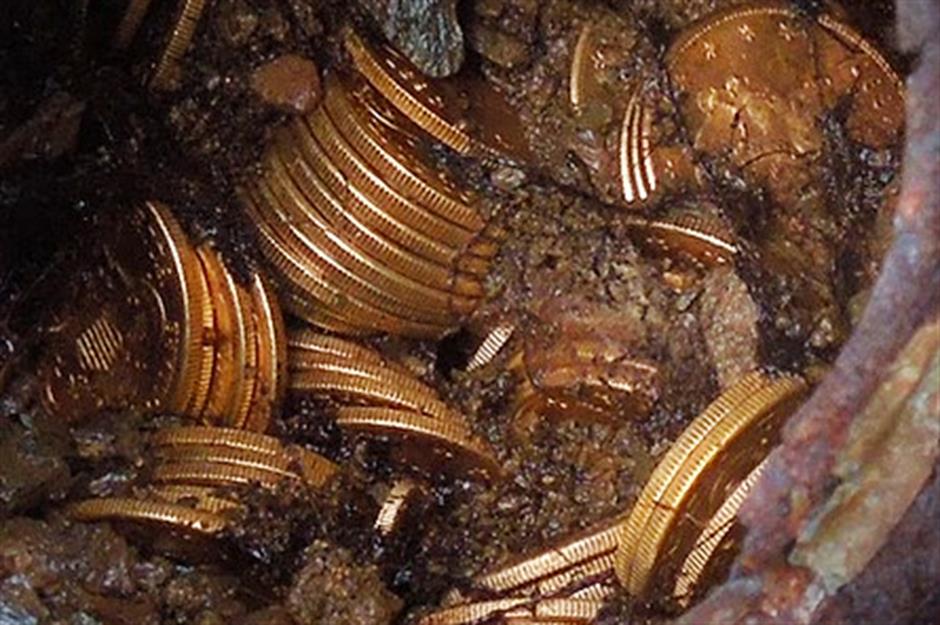
In 2013, a Californian couple found a literal pot of gold while walking on a footpath they’d used for years.
After noticing that a half-buried rusty can on the side of the path contained a stash of gold coins, the couple returned to the site, finding more cans (and more coins) with each trip.
The total hoard comprised more than 1,400 gold coins dating back to the 1800s, with an estimated value of $10 million.
Both the location of the land and the couple's identity have been kept secret, but the treasure has been dubbed the "Saddle Ridge Hoard" after a unique identifying feature on the couple's property.
Colorado: a 13.5lb gold nugget
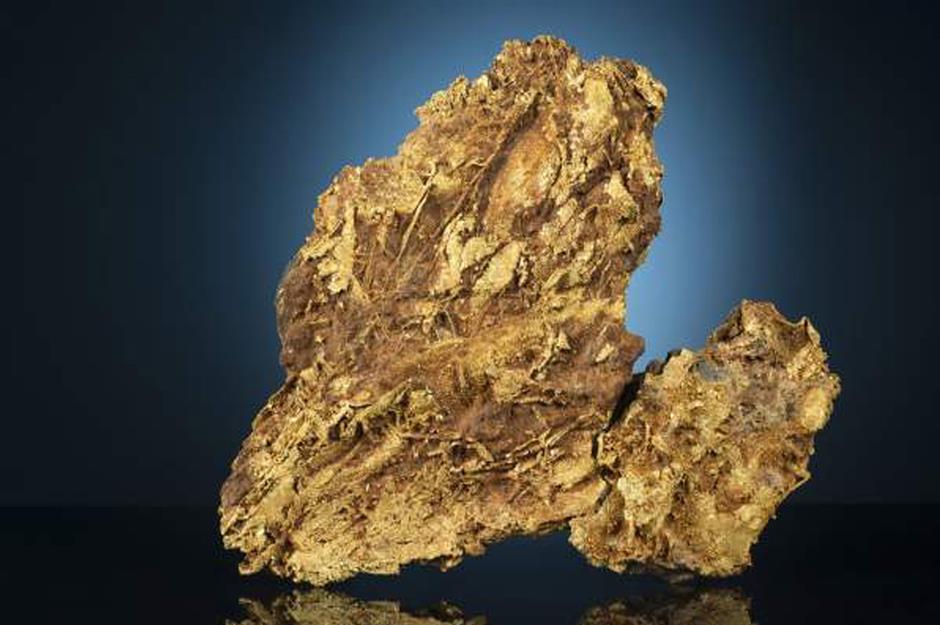
In 1887, gold prospectors Tom Groves and Harry Lytton hit the jackpot when they discovered a 13.5lb nugget of gold near Breckenridge, Colorado.
According to legend, Tom wrapped it up and carried it into town, showing it off like the proud parent of a newborn child. It quickly became known as "Tom's Baby."
What happened next isn't known for certain, but Groves and Lytton are said to have given the nugget to the local mine owner who paid them for their discovery, and Tom's Baby was put on the train to Denver.
For some reason the chunk of gold was assumed to be lost until the early 1970s, when it was finally found in a vault owned by the Denver Museum of Nature and Science, albeit 2lb lighter. Tom's Baby has been on display at the museum since 1974.
Connecticut: Revolutionary War items
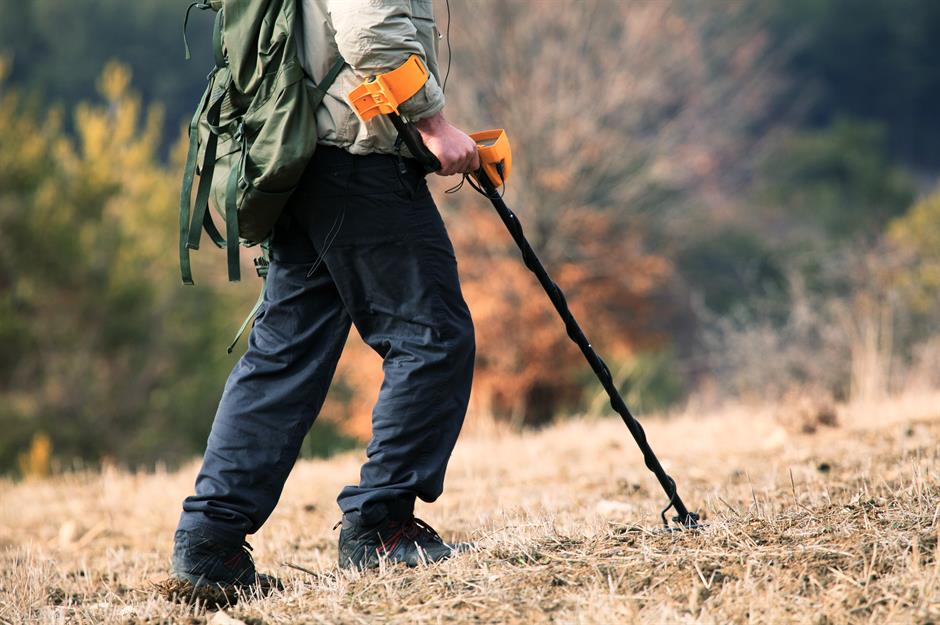
There are vast amounts of treasure to be found in Connecticut – although we're not talking about gold and gemstones.
Various groups of metal detector enthusiasts regularly get together to find historical artifacts from days gone by across the state. In 2012, one such group, the Yankee Territory Coinshooters, found a stash of goods dating back to the Revolutionary War period.
The haul was uncovered at a property named James Wadsworth House in Durham, Connecticut. The property is believed to have been built in 1709.
Delaware: sunken treasures from a shipwreck
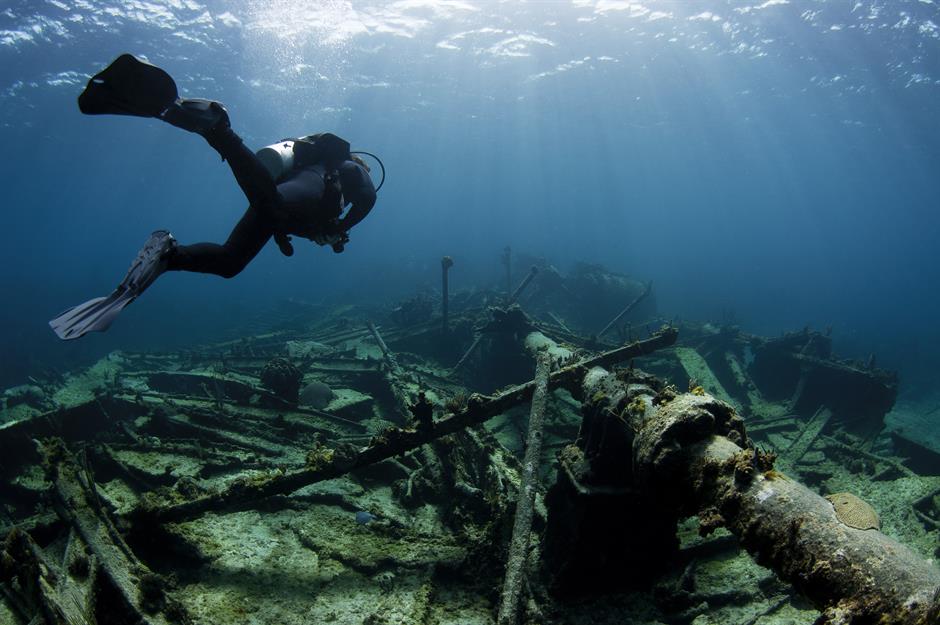
It isn’t just hobbyists who are on the prowl for buried treasure. Archeologists are getting in on the act, too – especially along the eastern seaboard in states such as Delaware, which is home to hundreds of shipwrecks along its coast.
A dredging project in 2004 uncovered artifacts from a sunken ship that dated back to the 1770s (later known as the Roosevelt Inlet shipwreck), near Lewes. Two years later, archeologists discovered the remains of the actual ship, which is inaccessible due to its location in a wildlife reserve. However, many of the artifacts have been retrieved and are on display at a local museum.
Florida: long-lost Spanish gold
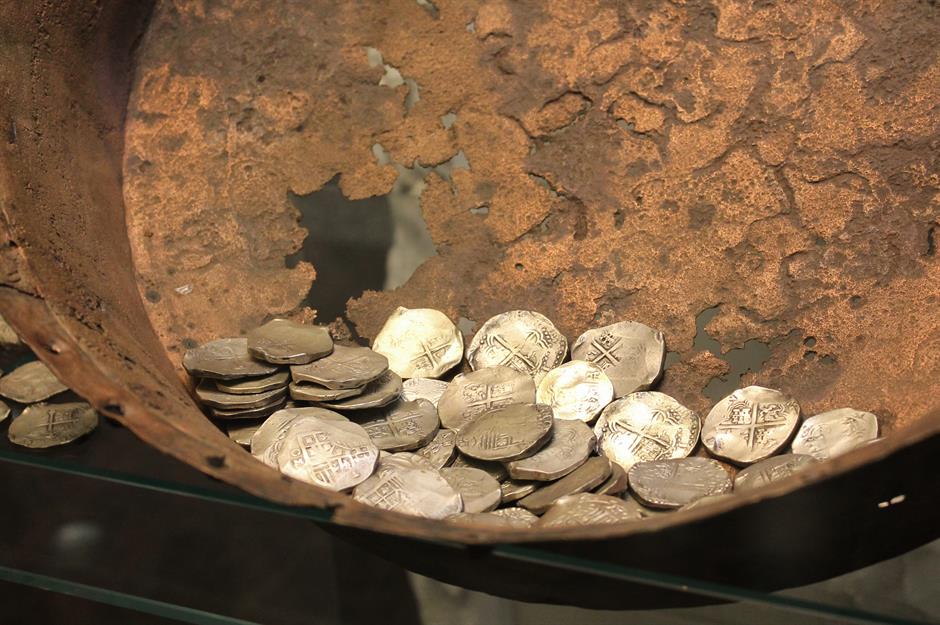
In 1715, a fleet of Spanish ships laden with treasure were wrecked in a hurricane and thought to be lost forever.
Unbelievably, one ship’s contents was discovered 300 years later by a family from Florida. The Schmitt clan quite literally struck gold several times at the wreck site, discovering gold coins and even a gold chain that measured 40 feet long. In total, the clan's discoveries are worth more than $1 million in today’s money.
The Schmitts shared the haul with the State of Florida, as well as with the salvage company that holds the site's lease for excavation and recovery.
Georgia: signs of an ancient homestead
.png)
While Georgia is perhaps best known for its myths about lost Civil War treasures, a more recent discovery in the Peach State is actually related to artifacts that are more than 1,000 years old.
The historic items were found at the Duckett Mill farm, near Gainesville, after a student spotted broken pottery in his grandfather's cornfield and alerted his anthropology professor. This led to the excavation of the site by the student's university, with support from the local enthusiasts of the Blue Ridge Archaeology Guild.
This photo shows finds from a similar project the two organizations worked on together. At the Duckett Mill site, discoveries included unusually shaped pottery and signs of an ancient homestead.
Hawaii: royal treasure
.png)
Between 1995 and 2002, treasure hunter Richard Rogers worked alongside scientists from the Smithsonian Institution to recover a ship that had been owned by King Kamehameha II (1797-1824), the second king of Hawaii.
The vessel had been wrecked in 1824, meaning it had taken almost two centuries for the gold, silver, precious gemstones, and various ancient items that were onboard to be rediscovered.
But while the haul could be worth millions, experts say the historical impact is the most priceless aspect of all. The artifacts have been displayed at the Smithsonian but, since 2015, have a permanent home at the Kauai Museum in Hawaii.
Idaho: a rare silver coin
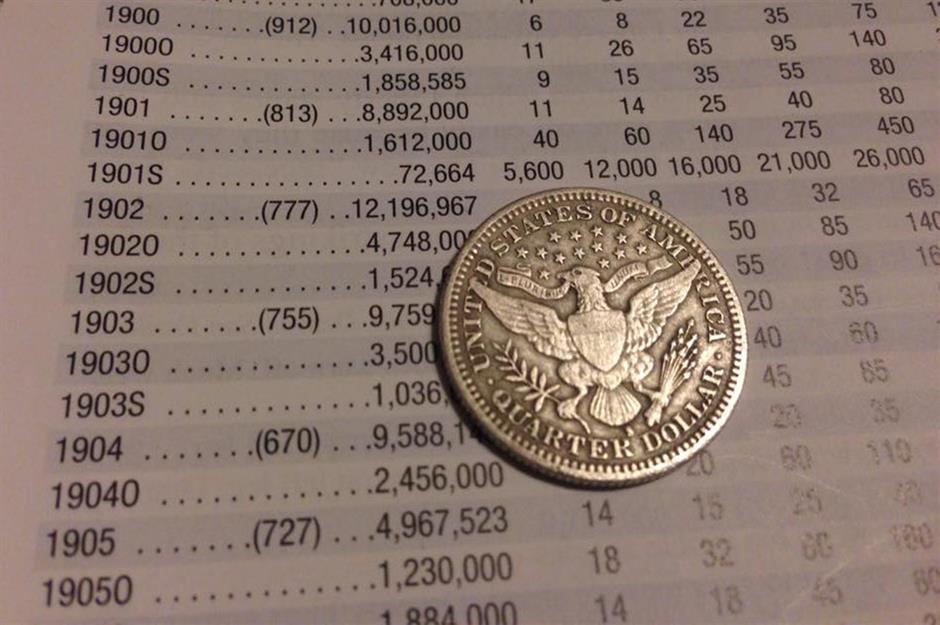
Growing up in California, Brandon Neice became interested in gold prospecting. The hobby stuck with him into adulthood and, after moving to Idaho, it became his career.
On his DrTones24K YouTube channel, Neice shares his treasure hunting adventures with millions of followers. Among the gold nuggets, meteorites, and ancient coins he's found around the world, one of the most exciting treasures he's discovered was located in his very own home state.
In 2014, he found a 1901 S Barber Quarter, considered by many to be one of the rarest silver coins in America. Neice put the quarter up for auction in 2015, making himself $6,251 in the process.
Illinois: another literary treasure trail

In 1983, a group of teenagers started digging holes in Chicago's Grant Park.
Although they were aware that people might be suspicious of their behavior, they actually had a very good reason. The teens were hoping to find buried treasure after following a series of clues that had been shared in a recently published puzzle book called The Secret: A Treasure Hunt.
Author Byron Preiss buried 12 ceramic casks with clues that can be found in the book's verses and paintings. For those who could solve the puzzles and unearth a cask, a jewel awaited them.
The Chicago teens eventually found the cask and received an emerald worth $1,000 for their efforts. That's around $4,500 in today's money.
Indiana: 42,000 artifacts and historic bones
.png)
When it comes to treasure, Indiana has become synonymous with the mysterious story of Don Miller.
A member of the Army Reserve, Miller spent much of his life traveling the world and illegally amassed a stash of 42,000 priceless artifacts in the process. In 2014, when Miller was in his early 90s, a SWAT team (including a helicopter) from the FBI Art Crime Department surrounded his farm to investigate what exactly he was hoarding.
The uncovered haul included cultural artifacts and figurines from China (pictured), all of which had to be returned. The FBI also discovered around 2,000 human bones, which had been taken from Native American burial sites. Miller died nearly a year after the raid and was never charged.
Iowa: Devonian fossils
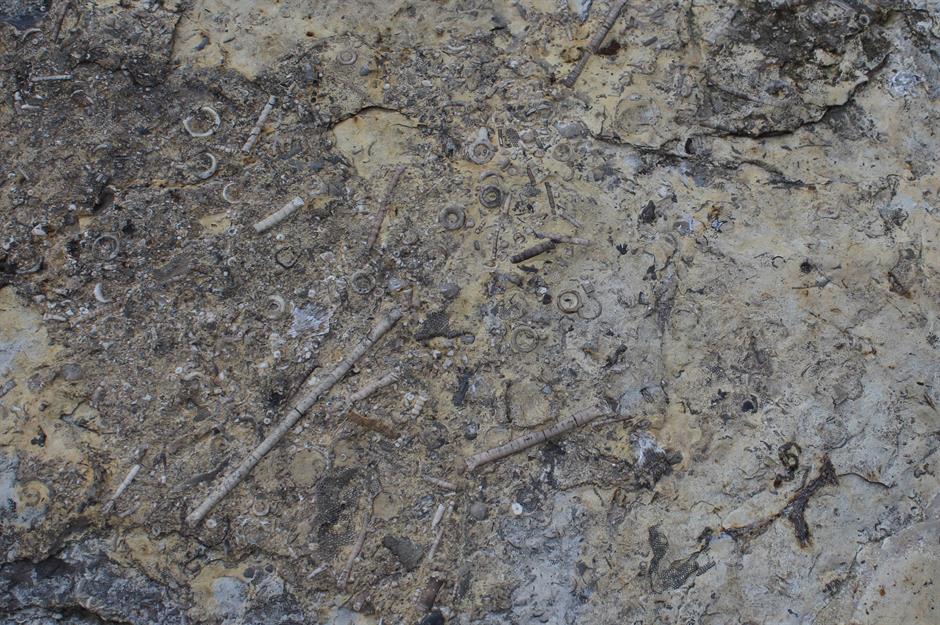
Stories of long-lost Native American riches and sunken riverboats rich with treasure have haunted Iowa for centuries.
These rumors attract countless metal detector hobbyists to the state every year and, while the most infamous treasures remain lost, there have been many instances of treasure hunters making remarkable discoveries.
One particularly impressive find was a set of fossils dating back 375 million years to the Devonian Period. The bones were recovered at the Devonian Fossil Gorge and are shown here.
Kansas: long-lost artwork
.png)
Treasure can be found in the most unexpected places, as the residents of small-town Wamego, Kansas found out in 1992.
Wamego's Columbian Theater was opened in 1895 as a music hall by builder J C Rogers, who originally decorated the interiors with six paintings sourced from Chicago's 1893 World Fair.
The theater was abandoned in the 1950s, but the artwork remained, along with 15 other paintings.
When local residents discovered the paintings in the early 1990s, they were astonished to find they were worth $800,000. The twist? The creatives behind the pieces of art are unknown and it’s only thanks to their historical significance that they’re worth a fortune.
Kentucky: rare muscle cars
.png)
It's not always a case of finders, keepers; sometimes the objects that tempt treasure hunters can never be theirs.
A great example of this is the tale of Patrick Nichols, a Clarksville muscle car enthusiast who found a stash of rare vehicles in a Kentucky salvage yard. Nichols made it his life’s mission to find and rescue vintage cars from the scrapheap, and heard rumors about a particular stash of abandoned muscle cars.
When he finally identified the owner and obtained permission to visit the yard, Nichols discovered the rumors were true. He found several classic muscle cars, including a Big Block SS Chevelle and a Pontiac Firebird Convertible, but unfortunately couldn't convince the owner to sell up.
Louisiana: copper and gold ingots
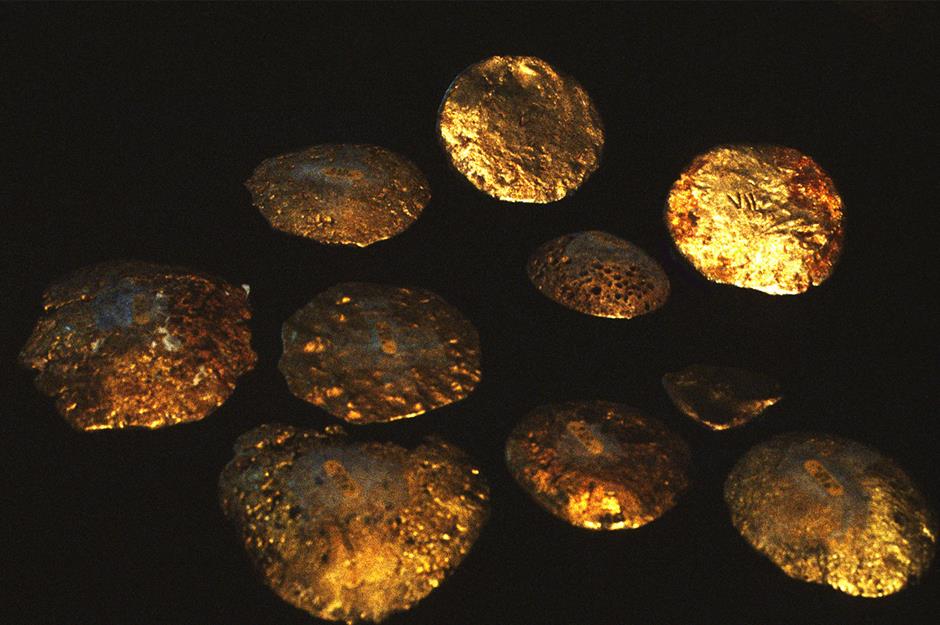
Cargo ship El Nuevo Constante set sail from Spain in 1766 and encountered a storm less than two weeks later, which caused irreparable damage.
The captain turned north and ran the ship aground in about 10ft of water, roughly a quarter mile off the Louisiana coast. All the passengers and crew fortunately survived, but while some cargo was recovered, some was lost to the depths of the water.
In 1979, Texan shrimper Curtis Blume discovered the ship's remains off the coast of Louisiana, uncovering copper and gold ingots while exploring the wreck. Eventually, the State of Louisiana took over the site and the artifacts.
Maine: a bronze medallion
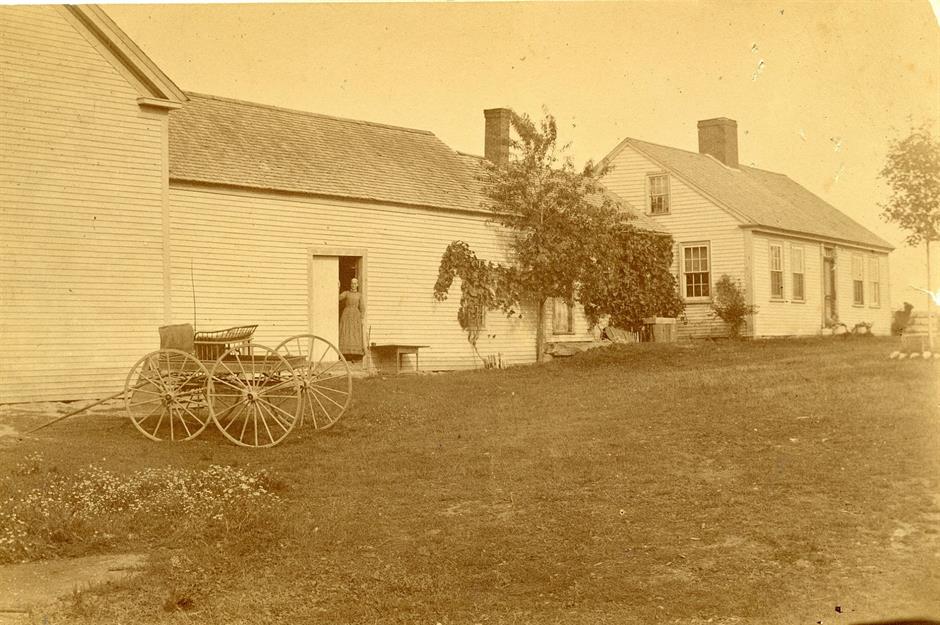
Maine resident Guy Marsden first discovered his passion for metal detecting in 2017 after watching the British television show Detectorists.
In just a few years, he’s netted a haul of jewelry, Civil War relics, and rare coins. After learning the ins and outs of the hobby via YouTube videos, Marsden has become one of the state’s most prolific detectorists.
His biggest find was a 1907 bronze medallion, which he found buried at an undisclosed historic farmhouse (similar to the one pictured here, photographed in 1900) and subsequently donated to a local historical society.
Want to learn more? Visit Marsden's blog, Guy Digs It Up where he tells the stories behind his finds.
Maryland: hidden gold coins
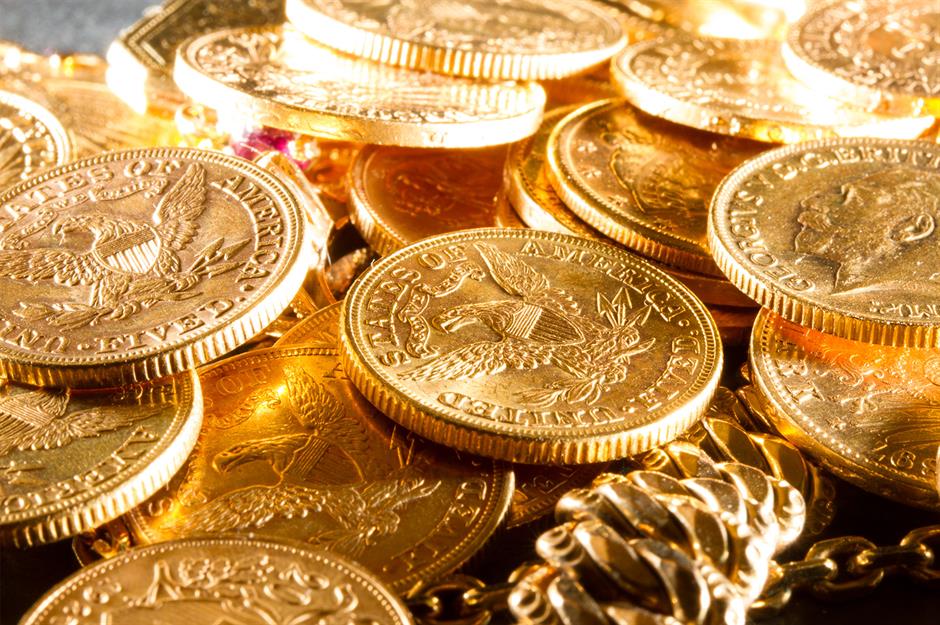
In 1934, at the height of the Great Depression, Theodore Jones and Henry Grob found a gold coin while digging in the dirt cellar of their Baltimore rowhouse.
The teens started searching the whole cellar and found 3,558 gold coins in total, worth a face value of $11,200 ($250,000 today). The boys intended to split the hoard and deposit the coins in the bank. However, family members advised them to go to the cops instead. When news of the discovery got out, people claiming ownership of the gold began to flood the local courts, while similar declarations from previous owners led to legal disputes.
In 1935, the coins were sold at auction for $20,000 and the boys received $6,000 ($130,000 today) from the proceeds, under the agreement that they could collect their money once they turned 21. Sadly, Grob died of pneumonia before hitting the milestone.
Massachusetts: a hidden cashbox
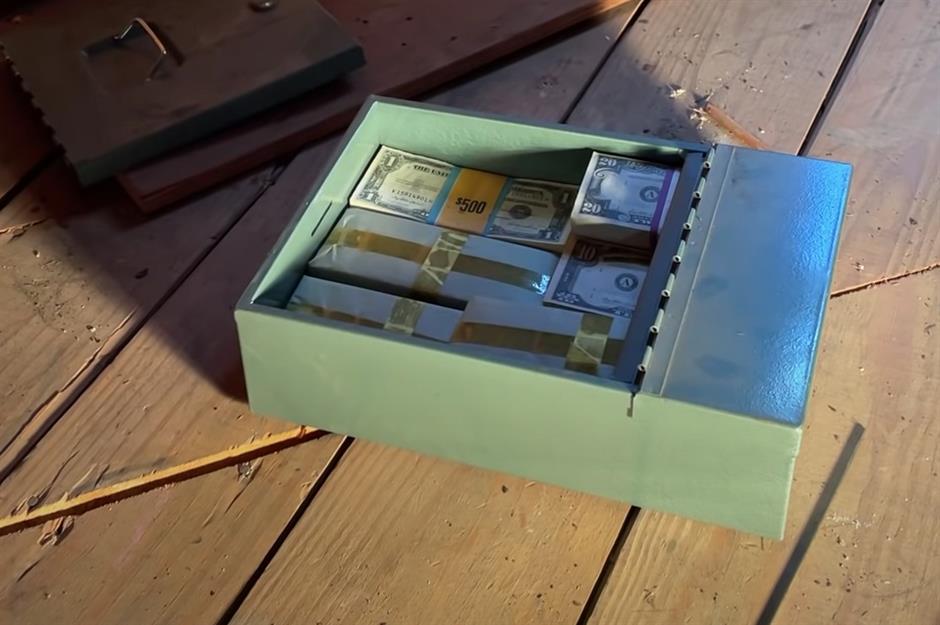
While preparing to sell her house, a woman contacted metal detectorist and treasure hunter Keith Wille, of the YouTube channel Rediscover Lost.
For reasons unknown, the unnamed woman's grandfather had hidden cashboxes around properties belonging to the family, several of which had been found by relatives. Assuming there might be riches stashed in her home, which had previously been owned by an aunt and uncle, the woman had spent years trying to locate the potential windfall, even hiring a construction contractor to pull up floorboards in the attic.
With the house soon to be on the market, hiring Wille was a final attempt to discover the cash – and it worked. Wille used a metal detector and a range of high-tech tools to locate a metal cashbox, which contained $46,000 and was dated to a bank transaction in 1958.
Michigan: an 11-carat diamond
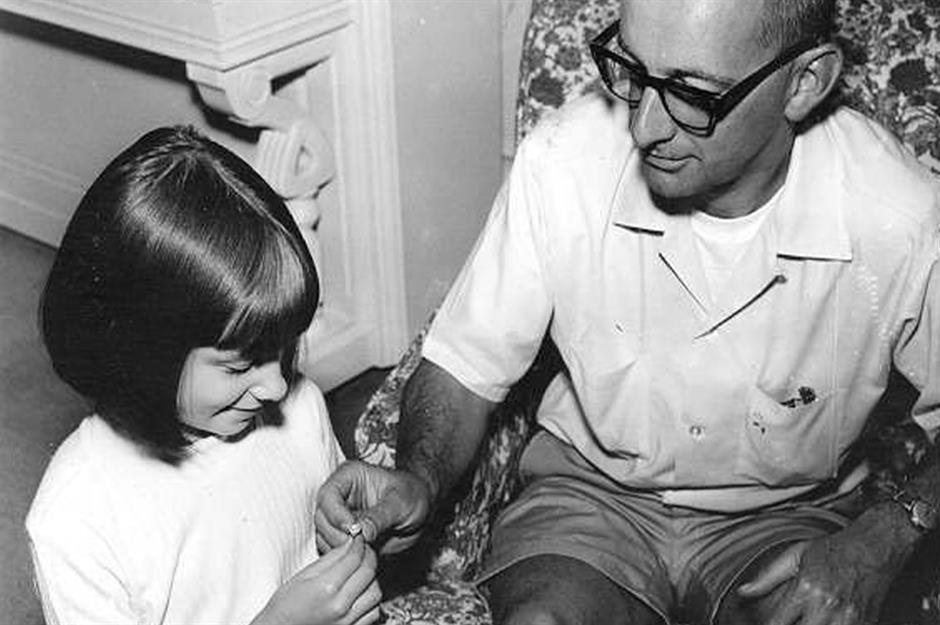
Arguably the best treasure ever found in Michigan, this particular discovery is cloaked in mystery.
At some point in 1894, Dowagiac resident Isaac Wells found a suspicious-looking stone during a trip to the city's gravel pit. Wells had the local jeweler Frank Blackmond send the gem off to Tiffany's, and the famous New York company confirmed it to be an 11-carat diamond.
The details of what happened next are a little hazy, but by the 1950s, the Dowagiac Diamond had been cut into four stones, all of which had been placed in rings that were owned by the Blackmond family. This photo shows one such ring.
It's said to be the only diamond ever found in Michigan – and there's no way of knowing how it got there...
Minnesota: pre-Prohibition booze
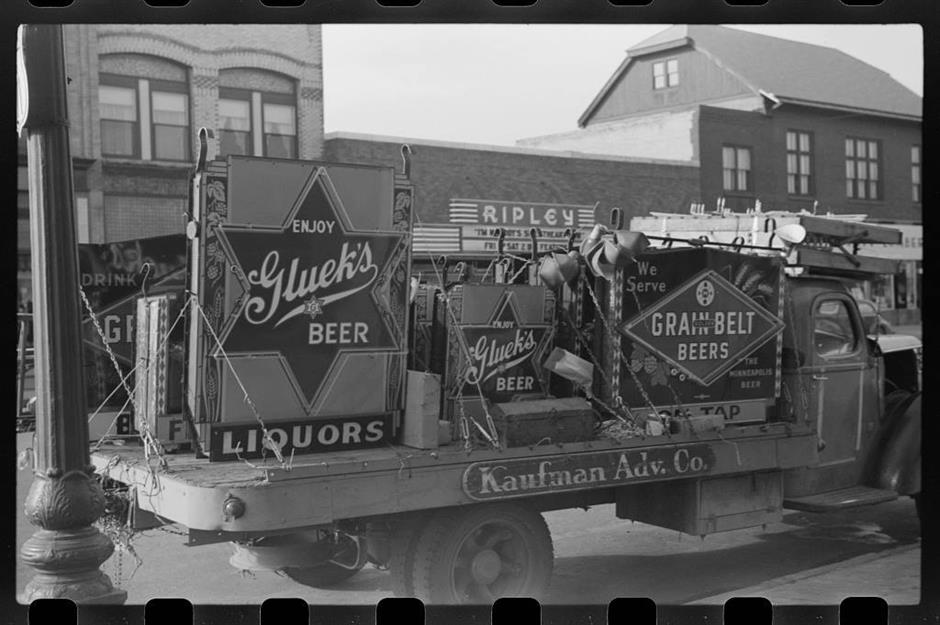
Mary Shanesy wasn't sure what to expect when contractors working on her Minneapolis home in 2010 called to tell her the most "amazing thing" had happened.
Hidden inside a wall within the property's attic, the workers had found a stash of pre-Prohibition alcohol, including bottles, jugs, and full cases of high-end wine and spirits, all dating back around a century. It was later discovered that Shanesy's house had previously been owned by Karl Gluek of the Gluek Brewing Company.
Shanesy gave the jugs to the workers who found the stash. The bottles, meanwhile, were donated to the nearby Hennepin History Museum, which held an auction that raised thousands of dollars courtesy of bidders as far away as London and New York.
Mississippi: lost work of a forgotten writer
.png)
Imagine buying a character-rich abandoned building only to discover that it was filled with unpublished work by a once-famed writer.
Well, that’s exactly what happened to Roy and Elena Segers from Brookhaven, Mississippi, who purchased the property with plans to convert it into a bed and breakfast in 2006. The couple were stunned to find thousands of poems, a few plays, and a couple of complete novels, all penned by the writer and actress Tallulah Ragsdale (pictured).
The house has since changed ownership again, with even more items unearthed during renovation work. Among them are poker chips, a 48-star US flag, and even vials of blood that are thought to date back to the historic house's time as an infirmary.
Missouri: a steamship under a cornfield
.png)
Folklore became reality when a mysterious sunken steamship was discovered under a cornfield in Malta Bend, Missouri.
For generations, tales have been told about ghostly vessels lost at the bottom of the Missouri River. In 1988, Bob Hawley (pictured) and his sons located the steamboat Arabia, which was located 45 feet underground and less than a mile away from the present-day river channel.
Inside was 200 tons worth of cargo, which had sunk along with the boat back in September 1856. In fact, so much treasure was discovered that the Hawleys founded the Arabia Steamboat Museum in Kansas City and have since collaborated with other treasure hunters in a bid to locate more lost steamships.
Montana: the Dueling Dinosaurs
.png)
Montana is home to a vast number of fossils – and with the historic artifacts able to reach million-dollar valuations, it's no surprise that the state is a magnet for treasure hunters.
But it isn’t as simple as just picking up a shovel. In 2006, treasure hunter Clayton Phipps (pictured) found a fossil of two intertwined dinosaurs, with the unusual discovery promptly nicknamed the "Dueling Dinosaurs."
After a decade-long legal battle between the owners of the land where Phipps found the dinosaurs and the owners of that land’s mineral rights, the North Carolina Natural History Museum purchased the Dueling Dinosaurs for $6 million in 2020.
Phipps split the money with the landowners and the other partners who helped with the excavation. Along with the cash, he also went on to star in the Discovery Channel TV show Dino Hunters.
Nebraska: gold and silver hidden at home
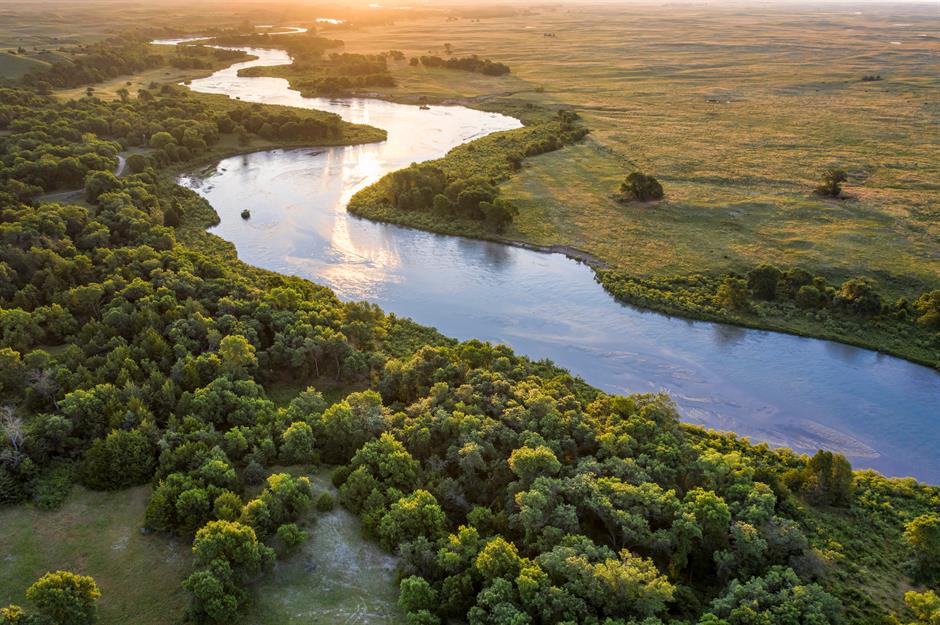
It’s rare to hear stories about treasure hunters who have spent time searching for gold that's been hidden by their own family members. However, for Nebraska native Alison Johnson, the story was very much a reality.
Johnson's wealthy father Dean Krotter was notoriously suspicious of banks. He chose instead to buy silver and gold coins, hiding his vast wealth across several locations and properties he owned in Palisade, Nebraska.
In 2008, Alison published a memoir titled The Eleventh Hour Can’t Last Forever, sharing the story of her family and the two tons of coins that they've found hidden in furniture, attics, and cupboards.
The find to-date is estimated to be worth more than $1.5 million – and the family isn't even sure they've located it all yet.
Nevada: gold and silver coins
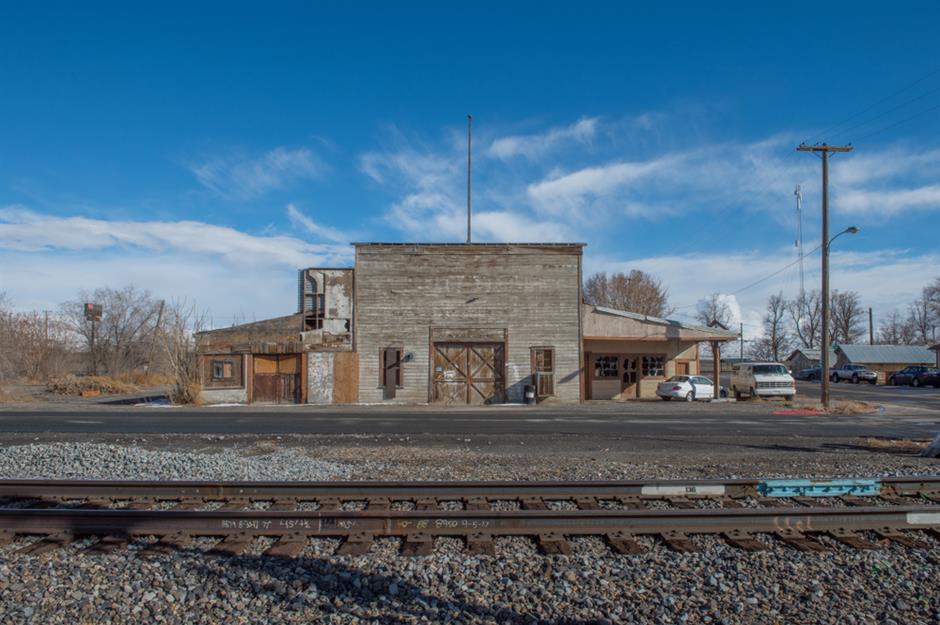
Treasure seekers are often inspired by historic legends, although sometimes riches that have slipped off the radar entirely can be discovered.
Lovelock, Nevada was once home to a settlement of Chinese families who likely came to work on the railroad back in the 19th century. Establishing their own businesses, the community quickly flourished – but Lovelock was left all but deserted by 1975. When freeway construction work started nearby, contractors performed the required archeological study of the remaining buildings. What they found astonished them.
Tucked away within the buildings was a cache of gold, silver, and other coins from the US, China, and Japan, worth an incredible $200,000. The collection is currently held by the Nevada State Museum.
New Hampshire: Roosevelt dimes and historic half-cents
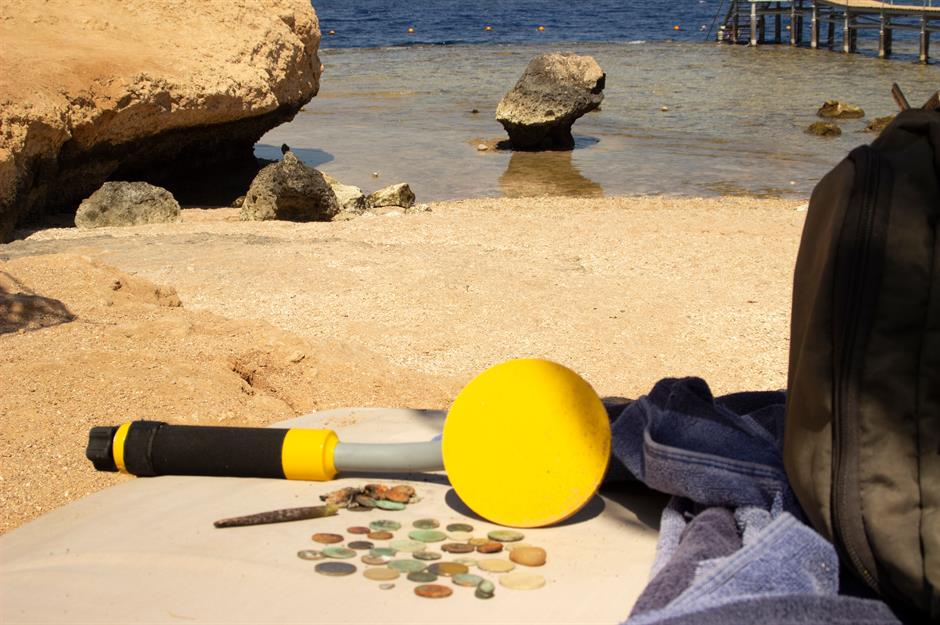
New Hampshire has become an increasingly popular destination for treasure hunters.
Enthusiasts have become obsessed with discovering the ancient coins that are rumored to be beneath Seabrook Beach. Then there's also the small matter of the long-lost Silver Madonna, a 10-pound silver figure of the Virgin Mary and Jesus, which is supposedly worth $15,000.
But while these legends remain buried in time, many metal detectorists have enjoyed their fair share of windfalls over the years, including Roosevelt dimes and historic half-cents.
New Jersey: a pirate's missing fortune

Captain William Kidd was a Scottish sailor who was tried and executed for piracy in 1701.
During his lifetime, Kidd was rumored to have buried the equivalent of more than $12 million in today’s money in various locations. Only a fraction of it had been recovered and sent back to England, along with Kidd, when he was arrested in Boston.
It had long been thought that Kidd's treasure might have been hidden in New Jersey, and the theory certainly showed promise in 1948 when a lobsterman found a number of old gold coins on the beach of Highlands, NJ (pictured).
This started a gold rush, with treasure seekers from all over the world arriving to dig up treasure. However, it later transpired that the coins were from 1730, which was long after Kidd’s death. It’s now thought that the coins came from a British frigate ship that sank nearby and that Kidd’s treasure is still out there – somewhere.
New Mexico: a 10,000-year-old meteorite
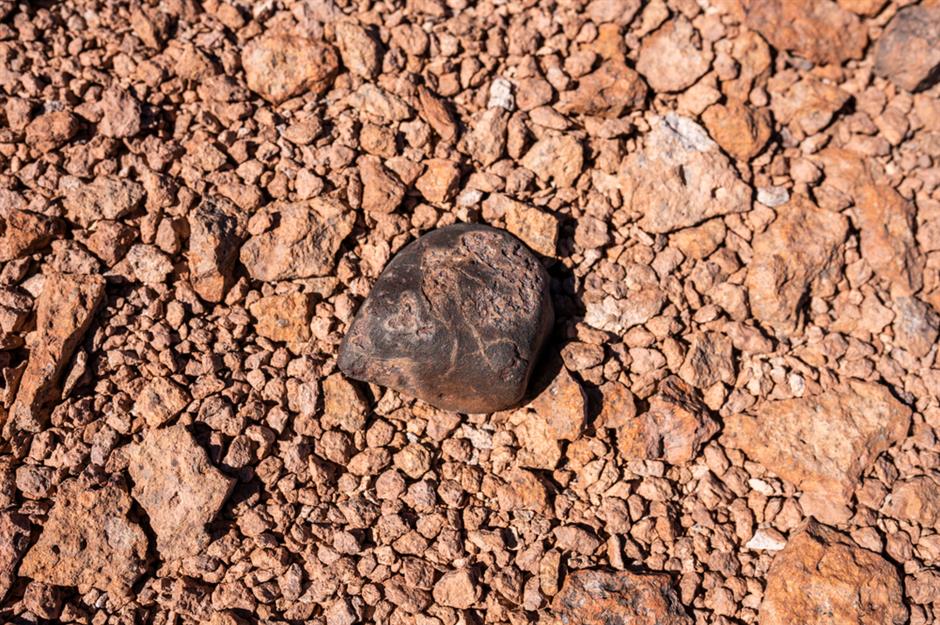
For 13-year-old amateur metal detectorist Jansen Lyons, the deserts of New Mexico presented a unique opportunity to become part of scientific history.
In 2011, while using a metal detector built by his grandfather, Jansen uncovered a 2lb rock he suspected might be a meteorite. The teen took it to the University of New Mexico's Institute of Meteoritics and the team promptly confirmed it to be a meteorite dating from 10,000 years ago. The young treasure hunter agreed to donate part of the rock to a local museum, while also keeping a chunk of it for himself.
New York: Prohibition-era whisky
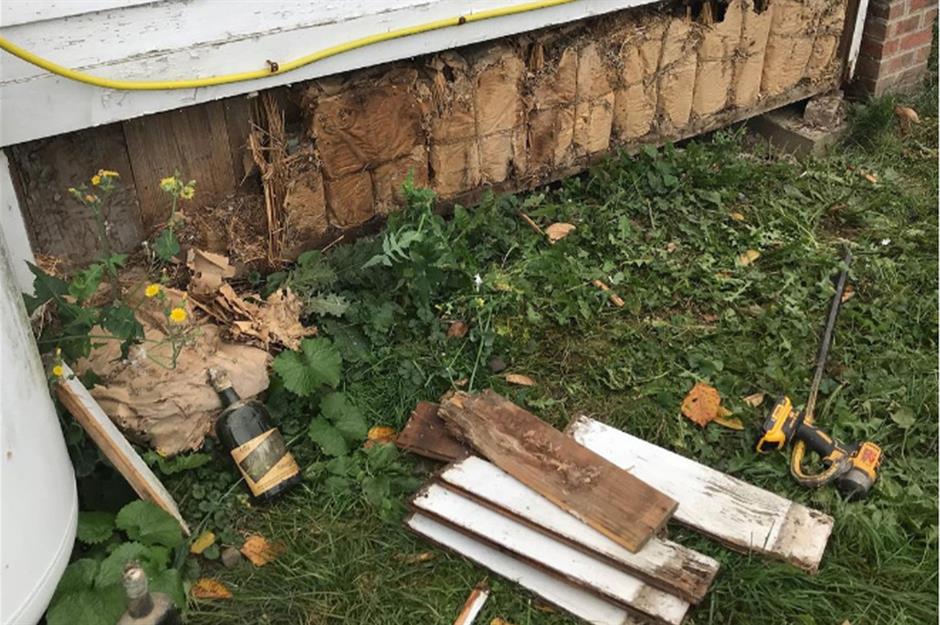
Nick Drummond and Patrick Bakker moved to Ames, New York in 2019 after purchasing a property in the area.
While there had been rumors that a previous owner had dabbled in Prohibition-era bootlegging, the pair had too much renovation work on their hands to give it much thought – until they removed a piece of trim and a package appeared.
It turned out that the walls of their home were lined with whisky bottles and soon they were even finding booze under the floorboards. Researching local property records and newspaper archives, the couple attempted to learn more about the stash's original owner, discovering the tale of a mysterious German count and his missing wife in the process.
North Carolina: a shipwrecked gold dredge
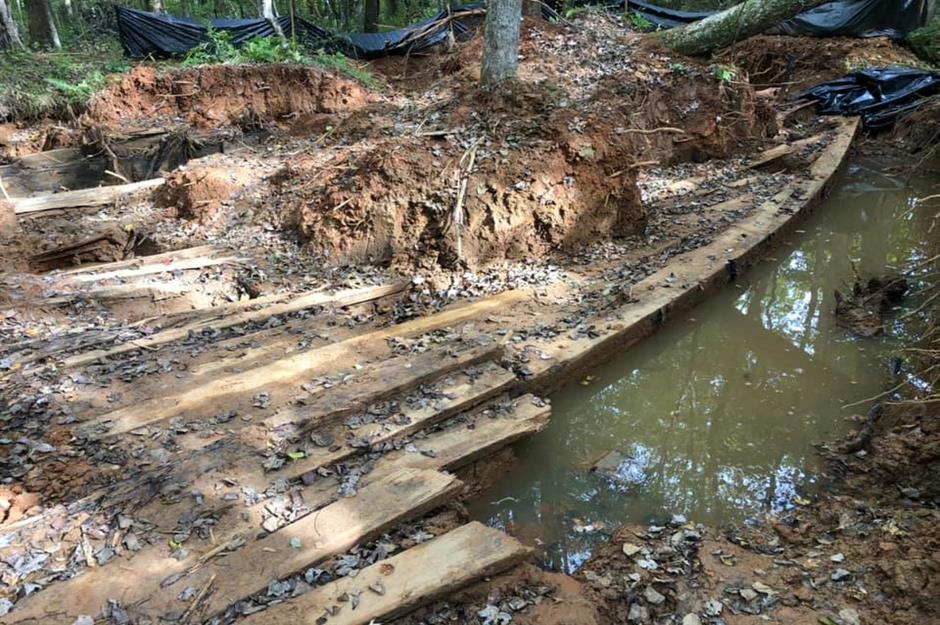
Adverse weather conditions can make treasure hunting that bit simpler, as a father-son team from North Carolina discovered when they found a 100-year-old ship on their land.
Drought conditions had caused parts of the ship to emerge from the earth, leading to its discovery by Tim and Ross Fisher. Funnily enough, the Fishers had actually purchased the land for the purpose of treasure hunting, with the area once home to the historic Portis Gold Mine. The land's mining origins is actually how the ship washed up in the area: the historic vessel (pictured here) is believed to be a type of boat that was known as a "gold dredge."
In 2019, Tim told reporters that people had called him "crazy" when he purchased the plot, which we imagine made him all the more delighted when he got to prove everyone wrong with the exceptional discovery. The family has since been working hard to expose the ship, finding gold and other artifacts preserved in the wreck. They hope to eventually open a museum on the site.
North Dakota: a Triceratops skull
.png)
Another hotspot for fossils, North Dakota is a must-visit destination for treasure hunters.
Important discoveries have been made in the state as recently as 2019, when a 23-year-old college student named Harrison Duran dug up a Triceratops skull that is estimated to be more than 65 million years old.
Duran made the roar-some discovery in North Dakota's section of the Hell Creek Formation – a rock bed formation that spans the four states of Montana, North Dakota, South Dakota, and Wyoming. The current location of the dinosaur skull remains a secret, with plans for it to eventually have an educational purpose while moving through different locations.
Ohio: a woolly mammoth tooth
.png)
It isn’t just dinosaur bones that can make treasure hunters mega bucks: discoveries that date back to the Ice Age can also be worth a cool amount too.
Just ask Jackson Hepner, a 12-year-old boy who found a woolly mammoth tooth (pictured) during a family trip to Ohio’s Amish country in 2019. While exploring a local creek that passes through The Inn at Honey Run, he stumbled across the ancient fossil, and it was quickly verified by local experts.
According to Mail Online, Jackson said he planned to hang on to his mammoth discovery "to show his friends."
Oklahoma: a backyard treasure haul
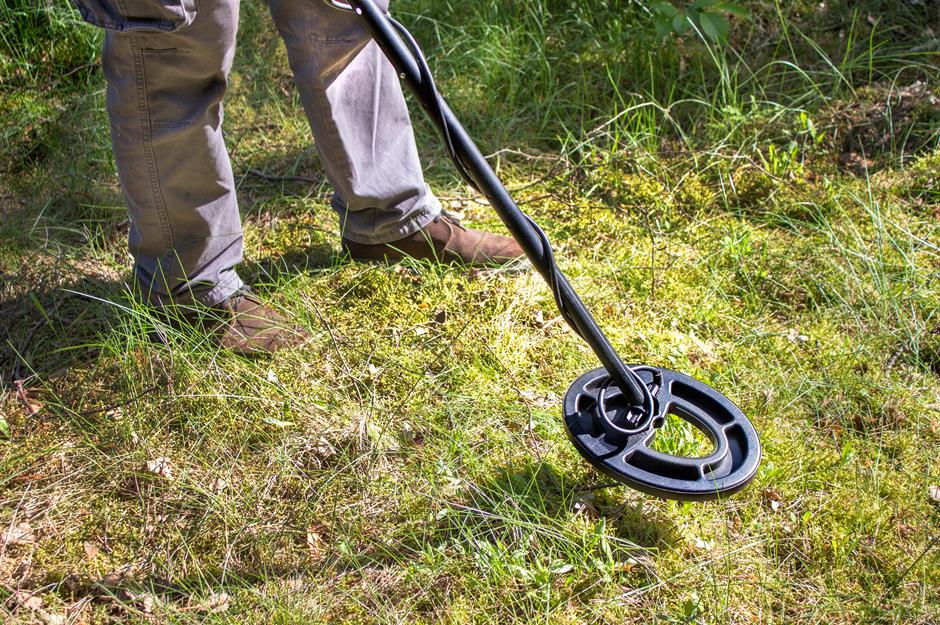
Oklahoma is home to another successful young treasure hunter. In 2018, seven-year-old Tripp struck gold in his backyard while using a metal detector with his grandfather Wayne Enyart.
The pair came across rings, diamonds, and pearls buried in the soil, with a value of thousands of dollars.
The haul also included historical artifacts, such as an old gun, half-dollars from the 1800s, and a book about Shakespeare that had been used as a diary.
Oregon: Prohibition-era whisky
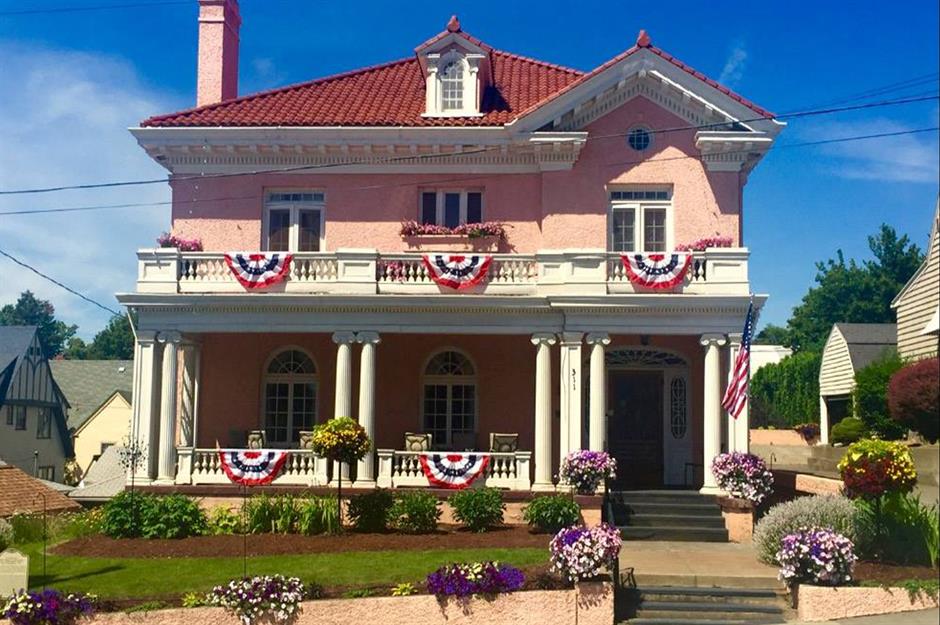
Another set of unexpected renovation discoveries revealed yet more Prohibition-era alcohol in Oregon.
Tracy Bosen and Kevin Michel are the owners of a striking pink-painted house on Pendleton's Main Street. Back in 2016, the couple found three bottles of whisky, dating back to the 1930s, wrapped in newspaper and concealed within a bedroom wall.
As luck would have it, workers insulating the attic in 2020 went on to find 10 more bottles of whisky, which are believed to be more than 100 years old. Bosen and Michel, who operate the property as a bed and breakfast, have decided against selling the bottles and will instead use them as decorative memorabilia.
Pennsylvania: missing gold bars (well – possibly)

The most famous treasure found in Pennsylvania has officially never actually been found – according to the FBI, at least.
A local legend dating back to 1863 states that a special unit was tasked with transporting 26 gold bars, each weighing 50lb, across the country. The unit was ambushed, and the gold was lost forever. Or was it?
Decades later, local man Dennis Parada picked up the search and found the precise mountainside location of the gold. Situated on federal land, he teamed up with the FBI in 2018 to visit the area and used high-tech equipment to demonstrate the existence of the Civil War-era gold buried below.
However, once excavation work had started, Parada claims the FBI kept him away from the site and, when he was finally allowed to access the dig, they told him nothing had been found.
Teaming up with his son in a bid to show that the FBI took the gold, Parada demanded proof, including videos of the excavation, which the FBI refused to release. In 2022, Parada sued the Justice Department for covering up the results of its excavation.
Rhode Island: a long-lost pirate's stolen swag
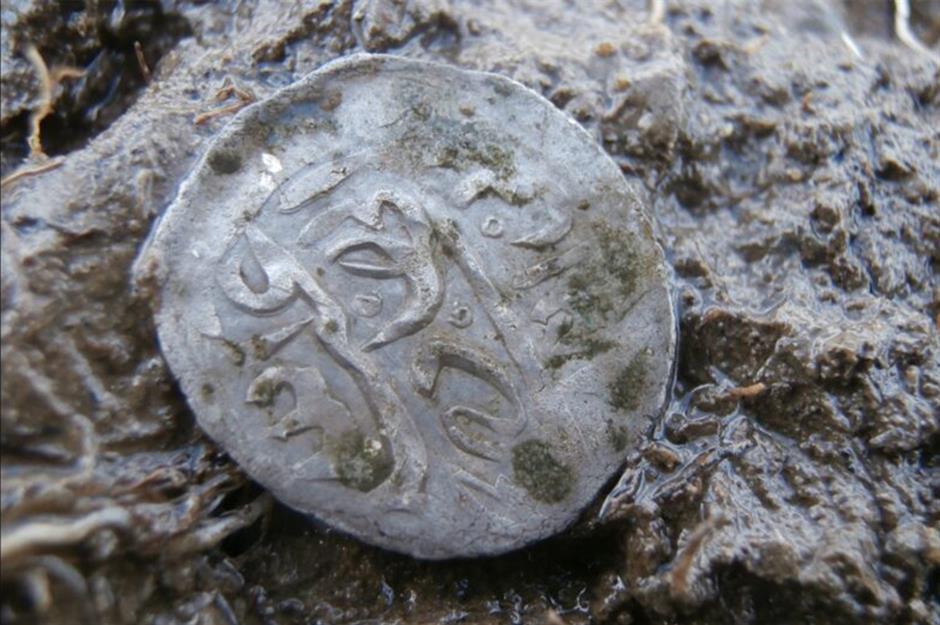
Jim Bailey of Warwick, Rhode Island was passionate about history and metal detecting even before he found an ancient silver coin dating back to the 1600s.
Beyond the marvel of its age, the Arabic characters on the coin led Bailey to discover that he could be holding the key to solving a worldwide manhunt for one of the 17th century's worst criminals.
English pirate Captain Henry Every ambushed one of India's royal vessels in 1695; the ship was carrying pilgrims, as well as gold and silver worth millions of dollars. While he fled to the Bahamas, the news of Every's murderous crimes began to spread and a bounty was placed on his head. From then on, he disappears from history.
However, the coin Bailey found in 2014 has been verified as minted in Yemen in 1693, linking it to Every's pillaging. Several more Arabian coins from the same era have also been found in Rhode Island, Massachusetts, and Connecticut, further expanding the case.
Bailey says he doesn't pursue his hobby for the money, although he does keep his best finds in a safe deposit box.
South Carolina: shipwrecked gold coins
.png)
South Carolina is home to a rather lucrative shipwreck, located around 20 miles off the coast.
The steamship North Carolina sunk in 1840 after it collided with another boat. Its wreckage has been popular with divers since the 1990s, when $700,000 worth of gold coins was discovered. Nicknamed "The Copper Pot," the North Carolina delivered once again in 2019 when divers from Blue Water Ventures International found a small number of $5 gold coins.
Estimates vary on how much gold the passengers had carried on that fateful journey. Blue Water Ventures later went on to discover the sunken SS Pulaski in 2021, which exploded off the coast of North Carolina in 1838 while carrying many wealthy passengers. The firm continues to explore the two sites.
South Dakota: a hefty gold nugget
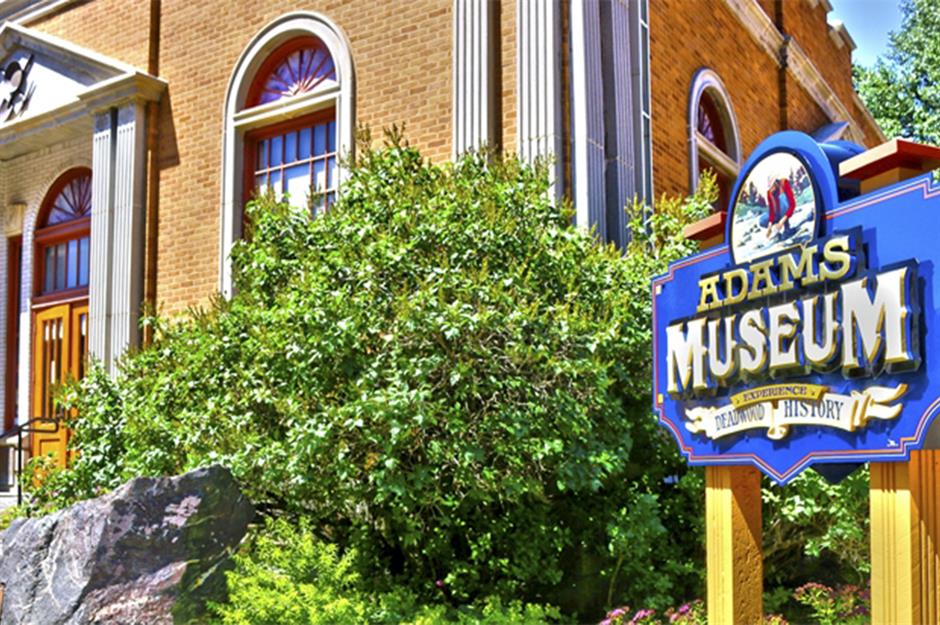
John Perrett left Wales while still a teenager, immigrating to America in 1883. He worked his way to the Black Hills of Deadwood, South Dakota, where he worked tirelessly as a miner for several decades.
His toil paid off in 1929 when he found struck gold while panning in Potato Creek. Measuring in at more than four inches long, Perrett's nugget weighed in at 7.43 troy ounces.
The gold discovery led to Perrett being nicknamed "Potato Creek Johnny" by the local community and he became something of a Deadwood legend. He sold the gold for $250 in 1934 (about $5,300 today) to local entrepreneur W E Adams, who put the nugget on display in his very own Adams Museum, which is still open to the public to this day.
Tennessee: a farmhouse haul
.png)
In Tennessee, a man went on quite the treasure hunt while clearing out his grandparents' home in 2013.
Posting under a pseudonym on online forum Reddit, he explained that his grandparents had enjoyed collecting coins, antiques, and weapons. He inherited their farmhouse after his dad passed away and discovered a mysterious concrete safe in the floor when emptying the property out.
While he had expected to find a few pistols, he was astonished to uncover a cache of expensive pocket watches, money, boxes of jewelry, dozens of rare collectible coins, and even silver bars. After posting photos online as proof of the find, the media picked up the story – and the mysterious Reddit user swiftly deleted his account.
Texas: Bonnie Parker's snake ring
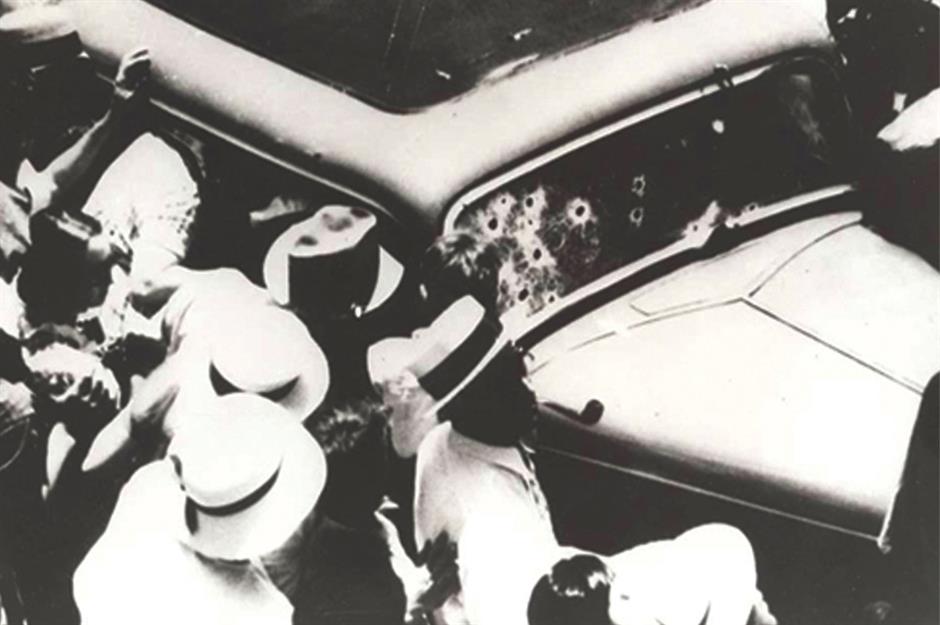
In Texas, meanwhile, clearing out a property that had belonged to her grandparents also proved lucrative for Debbie Daily and her family.
They found many items of memorabilia dating back to grandfather Richard Schmid's awe-inspiring career as Dallas County sheriff, including an inventory list that featured an entry for a ring belonging to Bonnie Parker. Daily's grandfather had always talked about chasing down infamous outlaw couple Bonnie and Clyde, who only just managed to escape the lawman in a bullet riddled-getaway car, before stealing another vehicle.
Debbie and her family searched the house for the distinctive silver ring, which featured three snakes with jewels for eyes. Eventually they found it and, while it's uncertain if Bonnie received the ring from Clyde himself or not, it still sold for $20,000 at auction in 2018.
Utah: the location of a long-lost mine
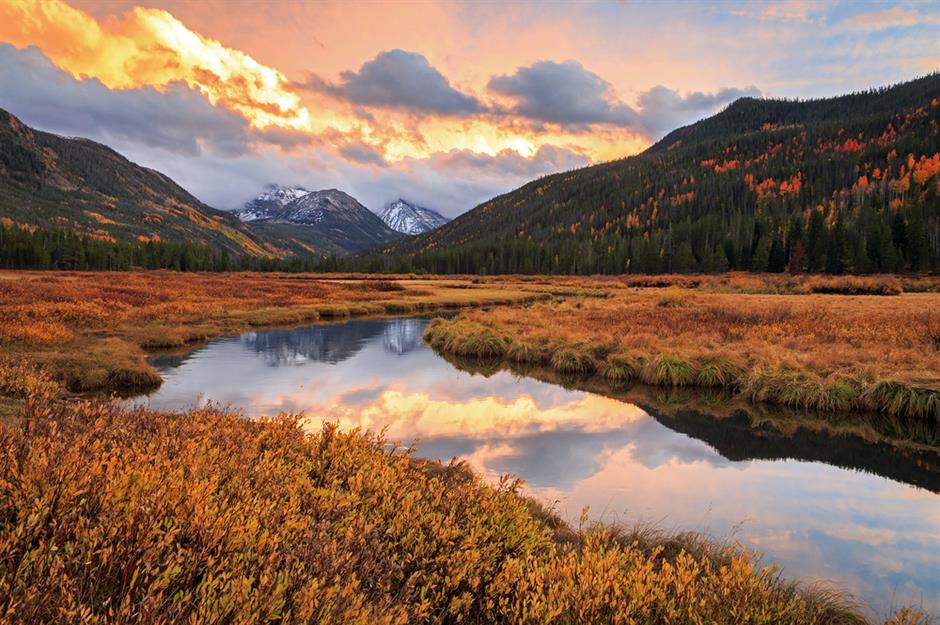
In 2013, a local man found what he believes could be the location of the Spanish Josephine de Martinique mine. The mine was founded by Jesuit priests in 1650 but abandoned just 30 years later during the Pueblo Revolt, an uprising of indigenous Pueblo people against the Spanish colonizers.
Gary Holt and his son believe that at least $1.7 billion of gold is hidden at Hoyt's Peak in the Uinta Mountains. Seeking permission from the US government to excavate deeper, officials denied the request and dismissed the idea that there is gold in the area.
According to Mail Online, the undeterred Holt has extracted calcite crystals from the site, which he markets to customers as "Goldite" and claims could be as valuable as semi-precious gems.
Vermont: a piece(s) of eight
.png)
This treasure hunting tale from Vermont proves you don’t have to find genuine treasure to make money from metal detecting.
Back in 2018, Brad Martin of Green Mountain Metal Detecting (pictured right) was given unprecedented access to acres of private land in Vermont. While he initially only discovered smaller windfalls such as old coins, he then unearthed a rare "pieces of eight" coin.
Famous for being a favorite of pirates – and one of the most valuable coins you could possibly find – this particular coin actually turned out to be a counterfeit from the period. While admittedly less lucrative than the genuine coins, even the fakes can have valuable historical significance for collectors.
Virginia: historic Spanish shipwrecks
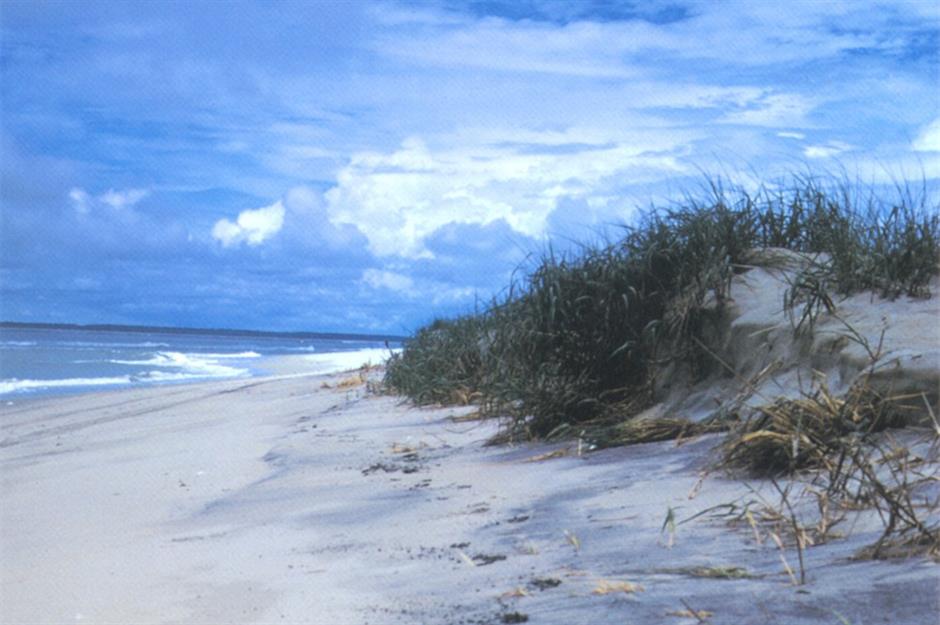
Treasure hunter Ben Benson knew he had struck it big in 1996 when he discovered the remains of two Spanish ships that had been laden with gold when they sunk off the coast of Assateague Island around two centuries ago.
Benson obtained permission from the state to salvage the wrecks in exchange for 25% of any profits. However, in 1998, Spain claimed ownership of the treasure ships and a legal battle ensued.
Two years later, the courts agreed with Spain, declaring that states can't give away the rights unless a foreign country has "expressly" abandoned a wreck. A lawyer acting on behalf of the country explained that an estimated 430 people had perished on the ships, and determined that their final resting place wouldn't be disturbed for commercial purposes.
By that point, Benson had already spent $2 million on discovering the ships, as well as on legal fees. We bet that that ruling gave him a serious sinking feeling...
Washington: an historic tattooing tool
.png)
In 2019, an anthropology PhD candidate at Washington State University found the "oldest tattooing tool ever discovered in North America."
But the discovery didn't take place during an archeological dig: rather, Andrew Gillreath‑Brown found the instrument while doing inventory checks in a museum storage facility.
According to researchers, the tattooing tool is of "great significance." Due to its cultural importance, it won't be sold and will instead be studied by the university's team and its students.
West Virginia: a wooden chest of treasures
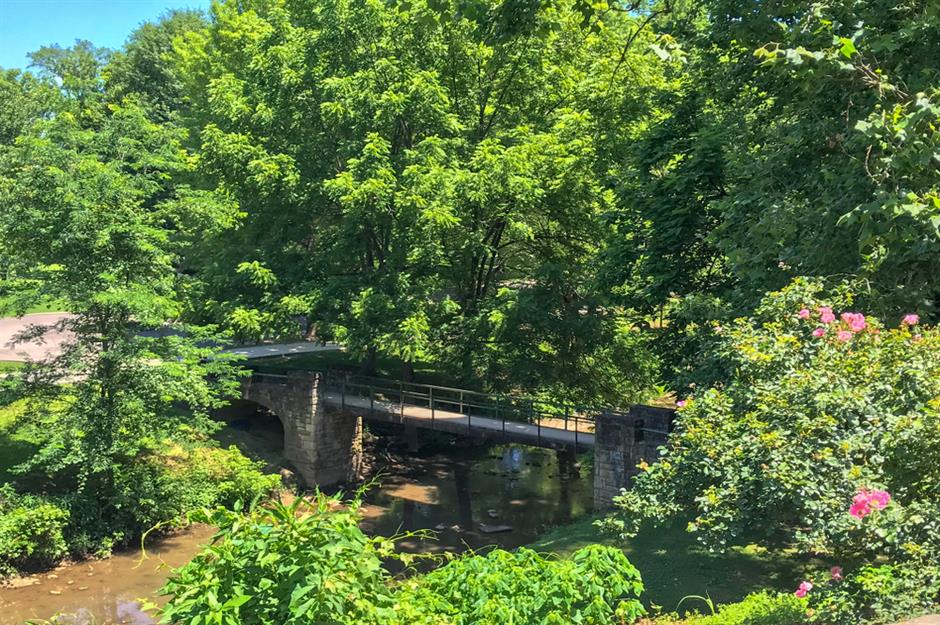
Also proving you don’t have to be a treasure hunting expert to make an awesome discovery, a group of Boy Scouts found a mysterious box filled with artifacts in a West Virginia park in 2017.
While taking part in a community project, the Boy Scouts came across a wooden chest buried in the ground at Guyandotte Park in Huntington. Inside, they found an assortment of items including political campaign buttons from the 1900s and a considerable amount of old paper money and coins, along with a note reading "finders to keep."
Wisconsin: coins and rings
.png)
For this Wisconsin family, metal detecting has become something of an obsession.
Passionate detectorist John Ruth Sr has dug up around 50,000 coins over the last five decades, making himself around $4,000 in the process. And that's a record that his son John, pictured, hopes to beat.
Since taking up the hobby, John Jr. has uncovered hundreds of historical treasures across Wisconsin, including ancient Jesuit rings and rare Spanish coins.
Wyoming: a 10oz gold nugget
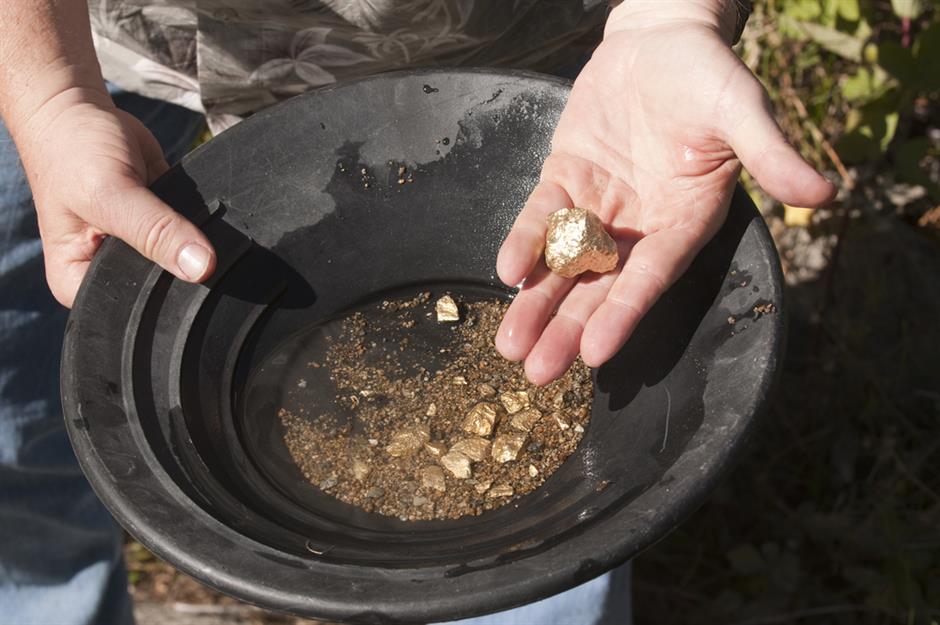
Wyoming is home to prolific gold hunter Jan Earle.
Along with her friends, Earle has had a lifelong fixation with panning for gold, and she spent the weekends of her childhood searching for treasure across the state.
Earle's biggest find to-date weighed in at 10oz; gold was worth about $35 an ounce at the time and Earle used the money for a down payment on a property. However, had she kept the gold, she could have sold it for upwards of $1,500 an ounce today. But Earle isn’t in it for the money. In fact, she loves her hobby so much that she now teaches eager groups of students the best techniques for gold panning.
Updated by Alice Cattley
Now read about America's luckiest ever treasure hunters
Comments
Be the first to comment
Do you want to comment on this article? You need to be signed in for this feature